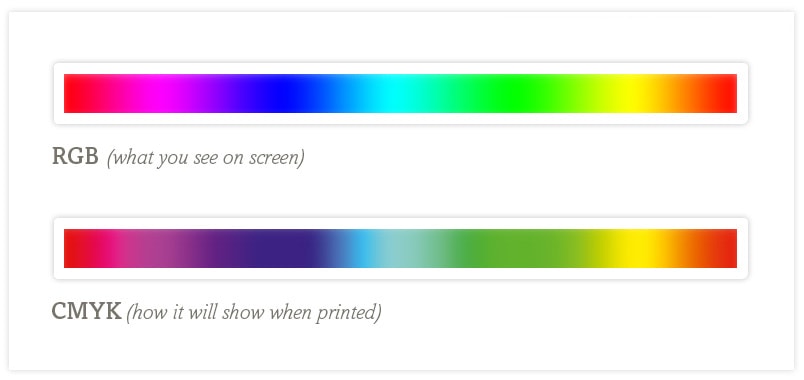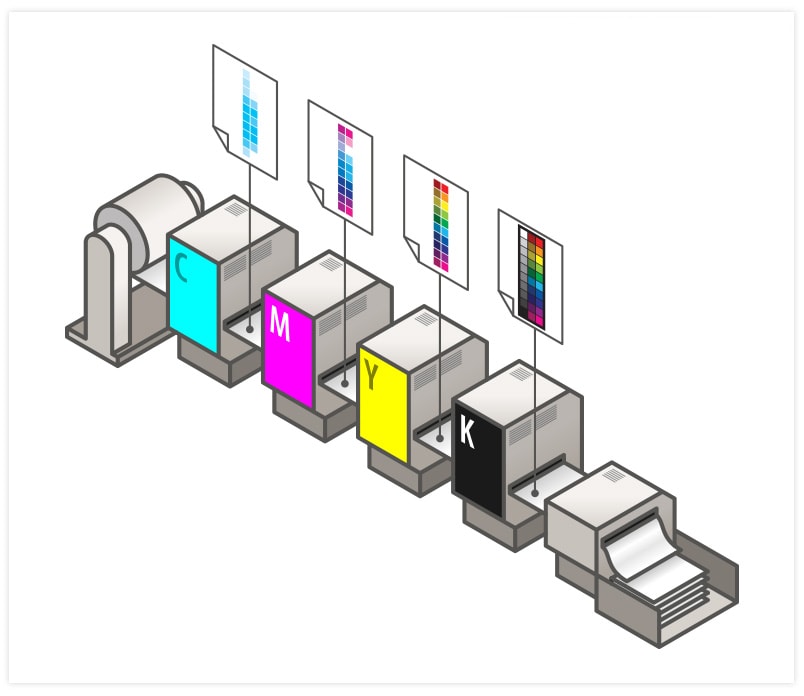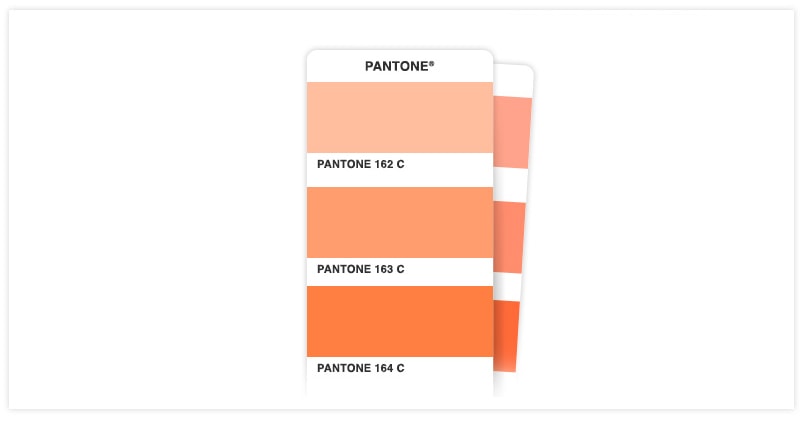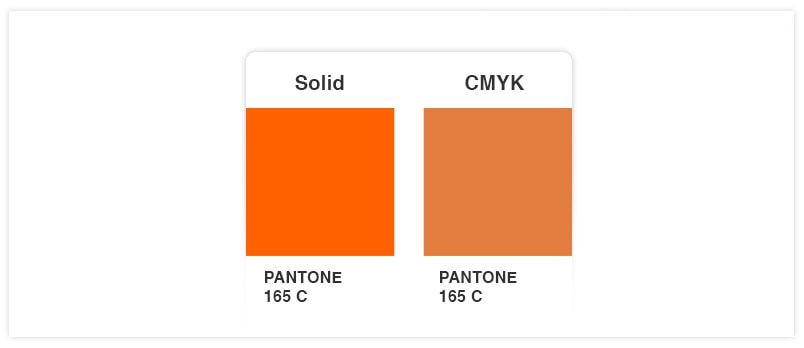Color Explained: RGB, CMYK and Pantone
We’re often asked, “What’s the difference between RGB, CMYK and Pantone?” Well, they are all ways to display color—RGB is used for digital (on screens like computer monitors and tvs), while CMYK and Pantone are processes used for print.
RGB
RGB stands for Red Green Blue, because all images displayed digitally, on screens, are made up of these colors. Using the RGB color mode also allows for more vibrant display colors. For example, you can’t recreate certain colors in print that you can have on screen. See the example image below of how they’d convert. RGB colors are what are displayed on computer monitors, phones, tablets, and television screens.

Helpful tip: any time you upload an image to your website, try to make sure it’s in the RGB color mode. If it’s in CMYK, the colors may appear skewed. If you don’t have a program like Photoshop to adjust, try using this helpful online color space converter.
CMYK
Essentially, how 4-color process works is by mixing colors together. It’s known as 4-color process because it uses four ink colors: cyan, magenta, yellow and black. Each color has its own printing plate and the inks are layered on top of each other to produce an image. This method is used for pieces with full color photos. It’s also usually the most cost-effective printing route for simple pieces with low quantities when we use vendors that do “gang run” printing (this means printing a simple piece, such as business cards, for several clients on one print run).

Pantone
Pantone is a corporation that created a solid color matching system (Pantone Matching System or PMS). Pantone colors (also known as Spot colors) are a certain set of colors that will accurately match when reproduced in print because they are already pre-mixed. Therefore, Pantone colors give the truest color result. This process is ideal when brand colors need to match exactly every time, or the brand color cannot be achieved using 4-color process. This route would be a good option for printing solid color logos on the cover of a presentation folder, a sign or promotional products. It could also be a cost-effective option for large quantities. Often times large organizations will print only two colors for large runs – their primary Pantone color and another color, like black.

Can I Use Both CMYK and Pantone?
Yes! But for a cost. If you have a full color brochure that will use 4-color process, but you want your logo to be your exact Pantone color, that’s an option too, but a more expensive one. Essentially, each ink color you add will incur more cost, as it requires an additional plate in the printing process.
Converting Pantone to CMYK

Print vendors can also convert Pantone colors in a design to CMYK, but the color won’t always match exactly. This is most noticeable with punchy, bright colors—when converted they lose their vibrancy.
Takeaways
We’re your color experts! Based on your branding needs and printing budget, we’ll recommend a printing process that fits best for you.


